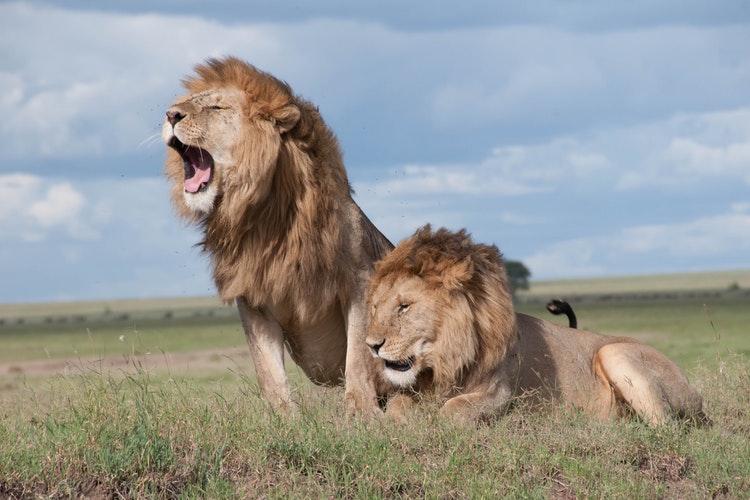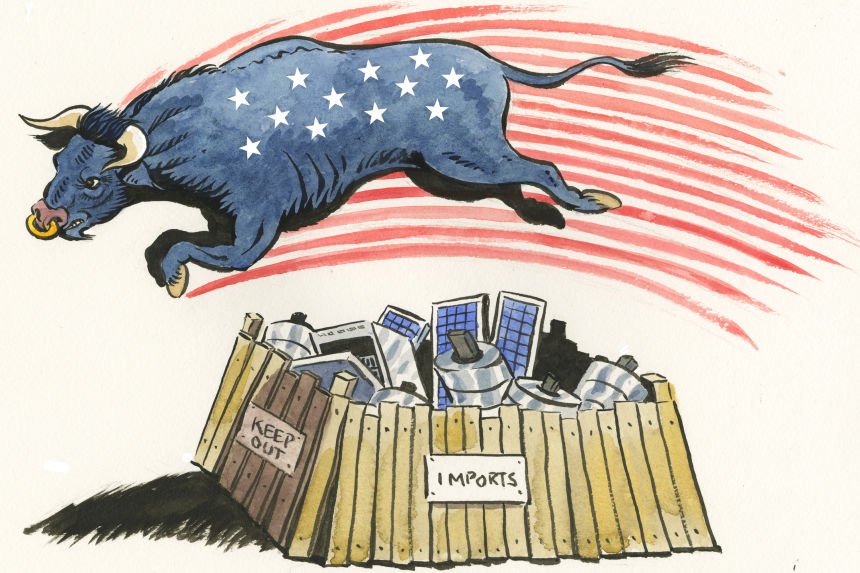Is AI Revolutionizing Wildlife Conservation? Examining The Benefits And Drawbacks

Table of Contents
Benefits of AI in Wildlife Conservation
H3: Improved Monitoring and Surveillance
Traditional wildlife monitoring methods are often time-consuming, expensive, and limited in scope. AI-powered tools are revolutionizing this process. Drones equipped with advanced cameras and AI-driven image recognition software can cover vast areas, capturing high-resolution images and videos of wildlife. Similarly, camera traps deployed across habitats automatically record animal activity, with AI algorithms efficiently sorting through the footage to identify and track specific species.
- Increased accuracy in species identification: AI algorithms can identify species with greater precision than human observers, even in challenging conditions.
- 24/7 monitoring capabilities: Unlike human observers, AI systems can monitor wildlife continuously, providing real-time data on animal behavior and distribution.
- Vast area coverage: Drones and AI-powered analytics enable the monitoring of large and remote areas, which would be impractical using traditional methods.
- Early detection of poaching activities: AI can analyze images and videos to detect signs of poaching, such as traps, snares, or human presence in protected areas, allowing for swift intervention.
Examples of AI-powered software used for wildlife monitoring include Conservation Metrics' analysts, which uses deep learning to identify individual animals from camera trap images, and Microsoft's AI for Earth, which offers cloud-based tools for analyzing environmental data.
H3: Predictive Modeling and Habitat Management
AI algorithms can analyze vast amounts of environmental data, including climate patterns, land use changes, and animal movement data, to create predictive models of wildlife populations and habitat suitability. This allows conservationists to:
- Optimize habitat restoration efforts: By predicting where habitat restoration will be most effective, resources can be allocated more efficiently.
- Proactively mitigate threats: AI can help predict the spread of diseases, wildfires, or other threats to wildlife, allowing for proactive mitigation strategies.
- Improve resource allocation: By predicting animal movements and resource needs, conservationists can optimize the placement of water sources, feeding stations, and other resources.
- Prediction of disease outbreaks: AI can analyze data on animal health and environmental factors to predict and prevent disease outbreaks.
Examples include AI models used to predict elephant migration patterns in response to changing climate conditions or to model the impact of deforestation on endangered orangutan populations.
H3: Combating Poaching and Illegal Wildlife Trade
AI is proving invaluable in the fight against poaching and illegal wildlife trade. AI-powered systems can:
- Provide real-time alerts of suspicious activities: AI can analyze sensor data from protected areas to detect unusual activity, such as vehicle movements or unusual sounds, triggering alerts for immediate response.
- Improve law enforcement strategies: AI can analyze data on poaching incidents to identify patterns and hotspots, allowing law enforcement to allocate resources more effectively.
- Identify trafficking routes: AI can analyze data on illegal wildlife trade to identify major trafficking routes and networks.
- Analyze social media for illegal wildlife trade: AI can monitor social media platforms to detect and disrupt the online trade of illegal wildlife products.
Examples include AI-powered systems used to detect illegal logging activity in real-time or to track the movement of endangered species being trafficked.
Drawbacks and Challenges of AI in Wildlife Conservation
H3: Data Requirements and Computational Costs
The effectiveness of AI in wildlife conservation depends heavily on the availability of large, high-quality datasets. This presents several challenges:
- Data collection challenges in remote areas: Gathering sufficient data in remote and challenging environments can be difficult and expensive.
- Cost of specialized hardware and software: Implementing AI-powered systems requires significant investment in hardware, software, and expertise.
- Potential for bias in algorithms due to limited data: If the training data is biased, the AI models may produce inaccurate or unfair results. Ethical considerations related to data collection and the potential for algorithmic bias must be addressed proactively.
H3: Ethical Considerations and Privacy Concerns
The use of AI in wildlife surveillance raises important ethical and privacy concerns:
- Potential for invasion of privacy: The use of AI-powered surveillance technologies raises concerns about the potential for invasion of privacy for both animals and humans.
- Risk of biased algorithms: Biased algorithms can perpetuate existing inequalities and injustices.
- Need for transparent and responsible AI development: It is essential to develop and implement AI systems in a transparent and responsible manner, with clear ethical guidelines and oversight.
- Potential for misinterpretation of data: AI outputs need careful interpretation by human experts, recognizing the limitations of the technology.
The development of robust ethical guidelines and regulations for the use of AI in conservation is crucial.
H3: Technological Limitations and Human Expertise
Despite its potential, current AI technology has limitations:
- AI cannot replace human judgment and on-the-ground expertise: Human expertise is still essential for interpreting AI results, making critical decisions, and adapting strategies based on unforeseen circumstances.
- Need for human oversight and validation of AI results: Human oversight is crucial to ensure the accuracy and reliability of AI outputs.
- Potential for algorithm failures: AI models can fail or produce inaccurate results, requiring human intervention and correction.
- Need for continuous development and improvement: AI technology is constantly evolving, and continuous development and improvement are necessary to address challenges and enhance effectiveness.
Situations requiring immediate human intervention might include unexpected animal behavior, equipment malfunction, or the need for on-the-ground assessment of a complex situation.
Conclusion
AI offers significant potential to revolutionize wildlife conservation, providing tools for improved monitoring, predictive modeling, and anti-poaching efforts. However, it is crucial to acknowledge the limitations and ethical considerations associated with AI's application. The successful integration of AI in conservation requires careful planning, ethical considerations, substantial investment, and collaboration between experts from various fields. While AI is not a silver bullet, responsible and well-considered implementation of AI technology can significantly bolster our efforts to protect endangered species and preserve biodiversity. The future of wildlife conservation hinges on leveraging the power of technology responsibly. Learn more about the exciting advancements in AI in conservation and how you can support its ethical application in protecting endangered species and explore the potential of artificial intelligence for wildlife management.

Featured Posts
-
 Saksikan Deretan Acara Tv Terbaik Di Bulan Ramadan 2025
Apr 23, 2025
Saksikan Deretan Acara Tv Terbaik Di Bulan Ramadan 2025
Apr 23, 2025 -
 Retail Leaders From Walmart And Target Confer With Trump On Tariffs
Apr 23, 2025
Retail Leaders From Walmart And Target Confer With Trump On Tariffs
Apr 23, 2025 -
 Istanbul Iftar Sahur Vakitleri 3 Mart Pazartesi
Apr 23, 2025
Istanbul Iftar Sahur Vakitleri 3 Mart Pazartesi
Apr 23, 2025 -
 Detroit Tigers Drop Series To Milwaukee Brewers 5 1
Apr 23, 2025
Detroit Tigers Drop Series To Milwaukee Brewers 5 1
Apr 23, 2025 -
 Dinamo Kiyiv Obolon Rezultat Matchu 18 Kvitnya
Apr 23, 2025
Dinamo Kiyiv Obolon Rezultat Matchu 18 Kvitnya
Apr 23, 2025
